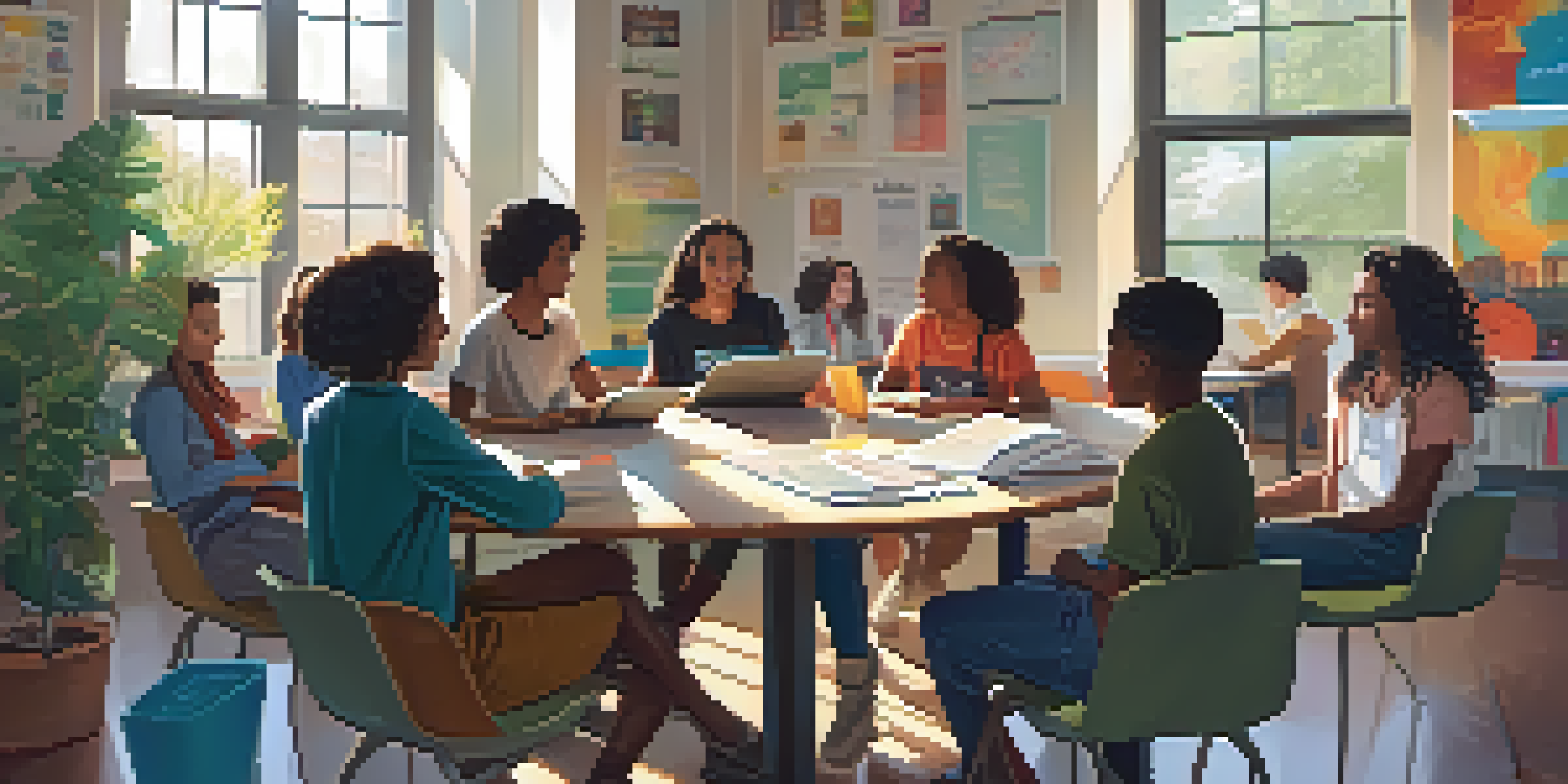Creating Personalized Learning Communities: Strategies and Benefits

Understanding Personalized Learning Communities Defined
Personalized learning communities focus on tailoring educational experiences to individual needs. They prioritize student engagement, allowing learners to progress at their own pace. This approach fosters a sense of belonging and connection among participants, enhancing motivation and collaboration.
Education is not the filling of a pail, but the lighting of a fire.
In these communities, learners are encouraged to take ownership of their learning journeys. This autonomy leads to a deeper understanding of subjects, as students actively participate in discussions and decision-making processes. The emphasis on personalization helps address diverse learning styles and preferences.
Moreover, personalized learning communities often leverage technology to create a more interactive experience. Tools like online forums, learning management systems, and collaborative software facilitate communication and resource sharing. This technological integration not only supports learning but also prepares students for a digital world.
Key Strategies for Building Personalized Learning Communities
To create effective personalized learning communities, start by assessing the needs and interests of your learners. Conduct surveys or informal discussions to gather insights about their preferences. This foundational step ensures that the learning environment is tailored to what students truly want and need.

Next, encourage collaboration among learners by forming small groups or pairs. Group work fosters peer-to-peer learning and allows students to share diverse perspectives. This collaborative spirit makes learning more enjoyable and helps build stronger relationships within the community.
Personalized Learning Enhances Engagement
Tailoring education to individual needs fosters deeper engagement and motivation among students.
Lastly, provide ongoing support and resources tailored to individual learning paths. This can include mentorship programs, access to online courses, or curated reading materials. By offering personalized guidance, you empower students to take charge of their own educational experiences.
The Role of Technology in Personalized Learning Communities
Technology plays a crucial role in facilitating personalized learning communities. Digital platforms enable students to access a wealth of resources that cater to their unique interests and learning styles. For instance, online videos, interactive quizzes, and discussion boards create a dynamic learning environment.
The best way to predict the future is to create it.
Moreover, data analytics can help educators track student progress and tailor instruction accordingly. By analyzing engagement metrics and learning outcomes, teachers can identify areas where students may need additional support. This data-driven approach enhances the effectiveness of personalized learning.
Additionally, technology fosters communication between students and instructors. Virtual office hours, chat rooms, and collaborative tools bridge the gap between formal and informal learning. This ongoing dialogue enriches the educational experience and builds a sense of community among participants.
Fostering Inclusivity in Learning Communities
Inclusivity is a cornerstone of successful personalized learning communities. It's essential to create an environment where all voices are heard and valued, regardless of background or ability. Establishing ground rules that promote respect and open-mindedness can help achieve this goal.
Encouraging diverse perspectives enriches the learning experience. When students feel comfortable sharing their unique viewpoints, it fosters critical thinking and creativity. Incorporating diverse materials and resources also ensures that all learners can connect with the content on a personal level.
Technology Supports Learning Communities
Digital platforms and data analytics play a crucial role in facilitating personalized learning experiences.
Moreover, providing accommodations for students with different learning needs is vital. This can include flexible assignment deadlines, varied assessment methods, or tailored learning strategies. By addressing individual challenges, you create a more equitable learning environment that benefits everyone.
Benefits of Personalized Learning Communities for Students
Personalized learning communities offer numerous benefits for students. They promote deeper engagement with the material, leading to improved academic performance. When learners feel that their education is tailored to them, they are more likely to take initiative and participate actively in their learning.
Moreover, these communities cultivate essential skills such as collaboration, communication, and critical thinking. In an environment that encourages teamwork and discussion, students develop interpersonal skills that will serve them well beyond the classroom. These soft skills are increasingly sought after in the workforce.
Additionally, personalized learning communities foster a sense of belonging. When students connect with their peers and educators, they are more likely to feel supported and motivated. This sense of community can significantly enhance their overall educational experience, leading to lifelong learning habits.
Benefits of Personalized Learning Communities for Educators
Educators also reap significant benefits from personalized learning communities. They have the opportunity to build stronger relationships with their students, leading to a more positive and productive classroom environment. When teachers understand their students' individual needs, they can tailor their instruction accordingly.
Furthermore, these communities allow educators to share resources and best practices with one another. Collaboration among teachers fosters professional growth and innovation. By learning from each other’s experiences, educators can continuously improve their teaching strategies and adapt to changing educational landscapes.
Inclusivity Strengthens Learning Environments
Creating an inclusive atmosphere encourages diverse perspectives and ensures all students feel valued.
Lastly, personalized learning communities can lead to increased job satisfaction for educators. Witnessing students thrive in an engaging, supportive environment is rewarding. This fulfillment can help mitigate burnout and inspire teachers to remain passionate about their profession.
Evaluating the Effectiveness of Personalized Learning Communities
To ensure that personalized learning communities are effective, regular evaluation is essential. Gathering feedback from students and educators can provide valuable insights into what is working well and what needs improvement. Surveys, focus groups, or informal check-ins can all be useful tools in this process.
Additionally, tracking student outcomes is crucial for assessing the impact of personalized learning. Metrics such as academic performance, engagement levels, and retention rates can help educators understand the effectiveness of their strategies. This data-driven approach enables continuous refinement of the learning community.

Lastly, fostering a culture of reflection promotes growth within the community. Encourage both students and educators to share their experiences and lessons learned. This open dialogue not only strengthens the community but also reinforces the importance of adaptability in the learning process.